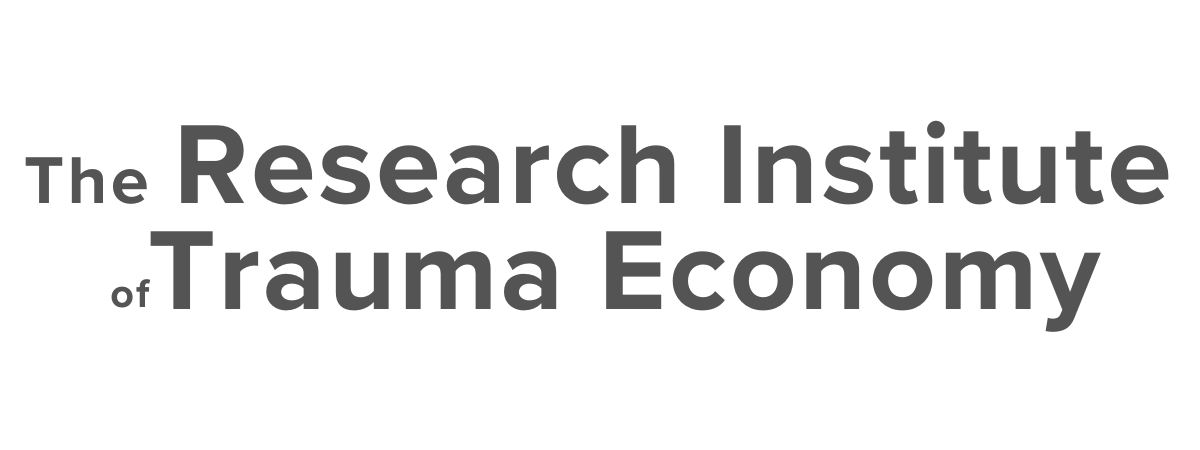“Turning Gold into Lead.”
-Vincent J Felitti, MD, FACP
Whether stemming from the many forms of violence and neglect, chronic stress, or a combination thereof—trauma significantly alters cognitive, emotional, and physiological functioning in ways that diminish long-term health and economic participation.
Trauma is not always just an individual psychological event but a measurable disruption to human development that reverberates across all systems—biological, psychological, social, and economic.
RITE approaches trauma as a public, structural, and financial issue—one whose impacts are not just felt in the body, but borne by communities, institutions, and economies over time.
-
The American Psychiatric Association (APA) defines single-event trauma as exposure “to actual or threatened death, serious injury, or sexual violence”. The resulting biopsychosocial consequences often include—sleep disturbance; chronic muscle tension and pain; chronic inflammation; immune system dysfunction; and neurological damage to the hippocampus and amygdala—resulting in decreased cognitive development and function, and emotional dysregulation, respectively.
When a traumatic experience that results in biopsychosocial dysfunction is untreated through psychological intervention, it has the potential to become Post-Traumatic Stress Disorder (PTSD).
-
The Adverse Childhood Experiences assessment (”ACEs”) is a simple, 10-question interview evaluating for traumatic experiences under the age of 18. This assessment was designed in 1997, following the interpretation of one of the largest longitudinal data-sets at the time—data from 17,000 healthcare customer’s, provided by the private, not-for-profit insurer Kaiser Permanente. What this study established was accurate and predictable medical dysfunction and disease that results later in life following traumatizing or adverse events as a minor.
-
Toxic stress is a severe form of stress response that occurs when an individual is exposed to strong, frequent, or prolonged adversity—such as abuse, neglect, household dysfunction, or unsafe living conditions—without adequate emotional support or buffering from a stable caregiver. This sustained activation of the body's stress-response systems can disrupt the development of the brain and other organs, particularly during critical periods of early life. Unlike normal stress responses that are brief and resolved with support, toxic stress leads to elevated levels of stress hormones like cortisol, which over time can impair neural connectivity, immune function, and metabolic regulation.
Clinically, toxic stress is distinguished by its biological impact on the hypothalamic-pituitary-adrenal (HPA) axis and its role in increasing allostatic load—the cumulative burden of chronic stress and life events on the body. Research has shown that toxic stress contributes to long-term health risks, including cardiovascular disease, depression, anxiety disorders, substance use disorders, and cognitive impairment. These effects often persist into adolescence and adulthood, even in the absence of continued adversity, highlighting the importance of early prevention and targeted intervention.
In 2024, the CDC reported that “64% of adults in the United States [have] experienced at least one type of ACE before age 18. Nearly one in six (17.3%) adults reported they had experienced four or more types of ACEs” (CDC, 2024). The National Council for Behavioral Health estimates “70% of adults in the U.S. have experienced some type of traumatic event at least once in their lives. That’s 223.4 million people” (2022). With each subsequent ACE score, the negative biopsychosocial effects compound in complexity and likelihood. This type of compounding negative-function plays a large role in intergenerational transmissions of trauma through epigenetics—or “inherited trauma”.
Trauma affects more than half of adults alive today. Globally, the risk-pool of traumatized adults or adults with toxic stress and/or ACEs, only increases in probability where standards of living and systems of care quality are lower—often in developing nations or nation's experiencing conflict. There are no statistics on this—because there are no meaningful measurements available.
To prevent or minimize the complications of ACEs and/or Toxic Stress has huge implications. In just one small example—preventing ACEs would result in a 44% reduction in Adult Depression (CDC, 2025). Of the U.S.’s 21 million adults with depression, this would save nearly $700 million dollars annually in prescription costs alone from 9.3 million adults. But what other measurable behavioral expressions are not being accounted for?

